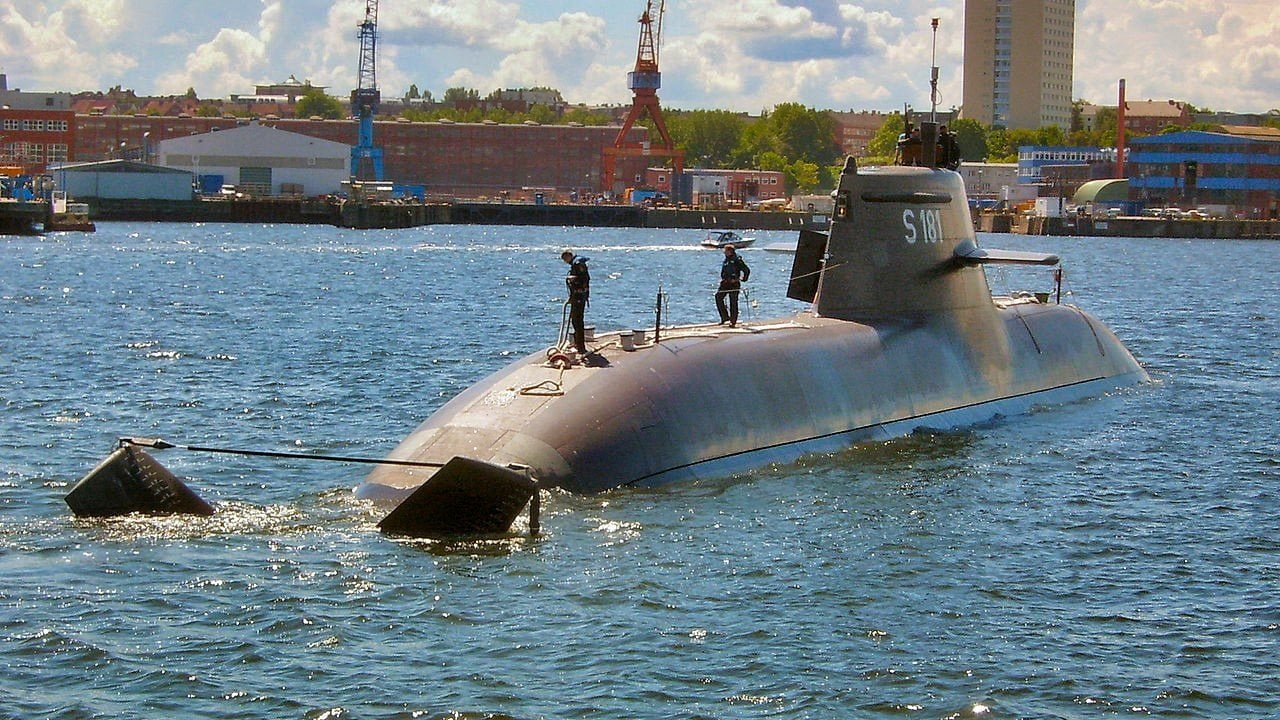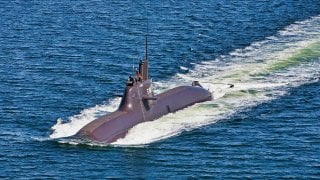Type 212A Submarine: A German Naval Masterpiece
The Type-212A offers an even greater range, diving depth, and displacement than its predecessor submarines while being equipped with improved communications systems and reconnaissance capabilities.
Summary: The article traces the history of German submarines from World War II to the modern era, focusing on the highly capable Type 212A submarines. Developed by Howaldtswerke-Deutsche Werft AG (HDW) for the German and Italian navies, the Type 212A introduced Fuel Cell Air Independent Power (AIP) technology, enabling silent cruising and extended submerged operations. These submarines have become an integral part of the German Navy, expanding its operational range to Northern Europe, the North Atlantic, and the Mediterranean Sea. The article also previews the future Type 212CD submarines, featuring improved sensors, extended range, and reduced acoustic presence for covert missions.
The German Navy's Type 212A Submarines
The Imperial German Navy (Kaiserliche Marine) was among the earliest pioneers of submarine warfare, and the first to operate submarines successfully on a large scale in wartime. During World War II, the Kriegsmarine further expanded its use of submarines – where they were a major component of the Battle of the Atlantic.
Germany's U-boats successfully operated far from its home waters, as far as the southern African coasts and even into the Arabian Sea and Indian Ocean. By the end of the war, almost 3,000 Allied ships (175 warships; 2,825 merchant ships) had been sunk by U-boat torpedoes.
Today, the modern German Navy (Deutsche Marine) operates a far smaller number of submarines, but these are considered highly capable boats that could quickly confront an adversary's surface fleet or ballistic missile submarines.
Enter the Type 212A
Barred from having submarines in the Bundesmarine after World War II until 1960, West Germany lagged in the development of submarines. Beginning with the Type 201 submarines – the first U-boat class built after the Second World War – there has been renewed focus on submarines that has continued into the 21st century.
The current generation of Deutsche Marine submarines is the Type-212A (aka U-212A) has earned a reputation as a reliable and advanced submarine. Developed by Howaldtswerke-Deutsche Werft AG (HDW) for the German and Italian navies (as the Torado-class for Italy), the Type-212A was the first to make use of Fuel Cell AIP (Air Independent Power).
The submarines can operate at high speed on diesel power yet switch to the AIP system for silent cruising at slow speed. It can also stay submerged for up to three weeks with little exhaust heatmaking the Type-212A virtually undetectable.
The German Navy has boasted that it is the quietest submarine in operation today, and a total of six Type 212A U-boats were commissioned between 2004 and 2015.
Beyond the Baltic
As the German Navy has expanded its operating area to cover the waters of Northern Europe, the North Atlantic, and the Mediterranean Sea, the Type-212A has been crucialallowing Germany to operate in the littoral areas as well as the open sea. The submarines are also equipped with a highly integrated command and weapons control system that interfaces with the sensors, weapons, and navigation systems.

The Type-212A offers an even greater range, diving depth, and displacement than its predecessor submarines while being equipped with improved communications systems and reconnaissance capabilities. In support of the modernization efforts, the sixth Type-212A submarines in service have also been equipped with land-attack capability. The first of the improved class, U-32 is approximately 183 feet long with a beam of nearly twenty-two feet. It has a draught of nineteen feet.
Notably, that the Type-212A boats are manned by just five officers and twenty-two sailors, and the submarine features two deckswhich was able to provide additional sleeping and living space and the end of "warm bunking." The boat's torpedo area is even reported to be spacious enough that it is no longer necessary to divide the interior to reload weapons.
Torpedoes are still the primary weapon, and the Type-212A features six 533-millimeter torpedo tubes. The tubes are positioned in two rows of three, four pointing slightly to the left while two tubes point to the right. Additionally, the submarines can be used to deploy German special operations forces through the torpedo tubes. While the German Navy may only have six of these Type-212A boats in operation these are quite a powerful and quiet boat that has the ability to operate in brown, green and blue water environments.
The Future Type 212CDs
Germany has already begun to look beyond the Type 212A U-boats, while Norway has begun constructing identical submarines to boost their maritime defense and strengthen military collaboration. Dubbed the 212CD, the vessel will be based on the well-established Type 212A operated by the German Navy and the Italian Navy.
A total of six 212CDs are now being constructed as part of a contract worth 5.5 billion euros ($5.9 billion) signed in 2021. Two of the advanced submarines under construction will be handed over to Berlin, while four will be delivered to the Norwegian Navy beginning in 2029.
The new submarine will be significantly larger than its predecessor, measuring 73 meters (240 feet) compared to the earlier version's 56 meters (184 feet). Moreover, the 212CD will boast a displacement of 2,500 cubic meters (88,286 cubic feet), as compared to the 1,450 tons of the 212A.
The future vessels will be equipped with improved sensors, an extended operational range, and reduced acoustic presence to support covert operations.
Author Experience and Expertise: Peter Suciu
Peter Suciu is a Michigan-based writer. He has contributed to more than four dozen magazines, newspapers, and websites with over 3,200 published pieces over a twenty-year career in journalism. He regularly writes about military hardware, firearms history, cybersecurity, politics, and international affairs. Peter is also a Contributing Writer for Forbes and Clearance Jobs. You can follow him on Twitter: @PeterSuciu. Email the author: [email protected]


